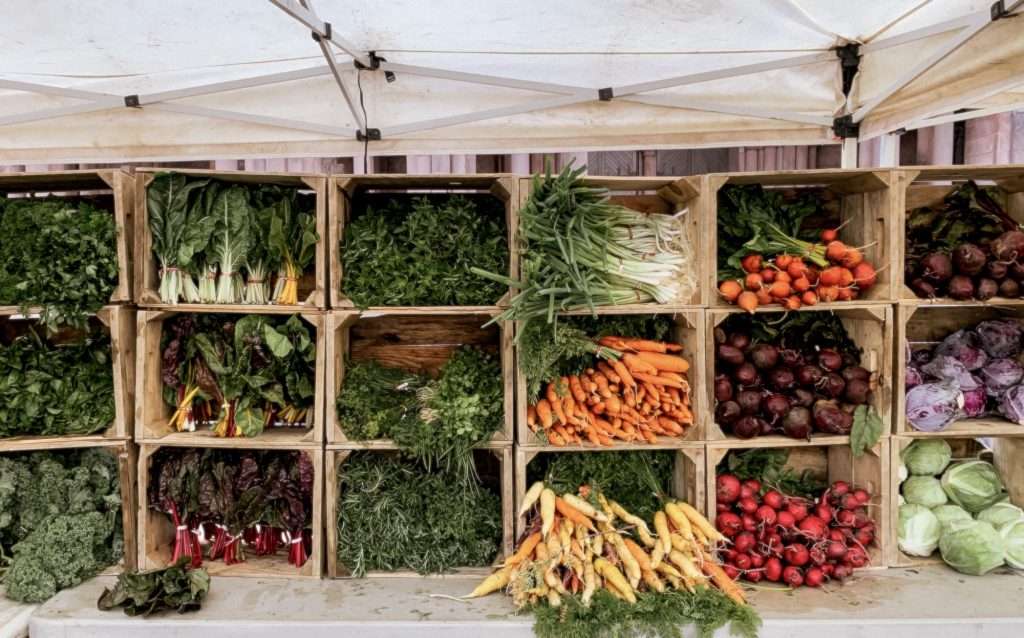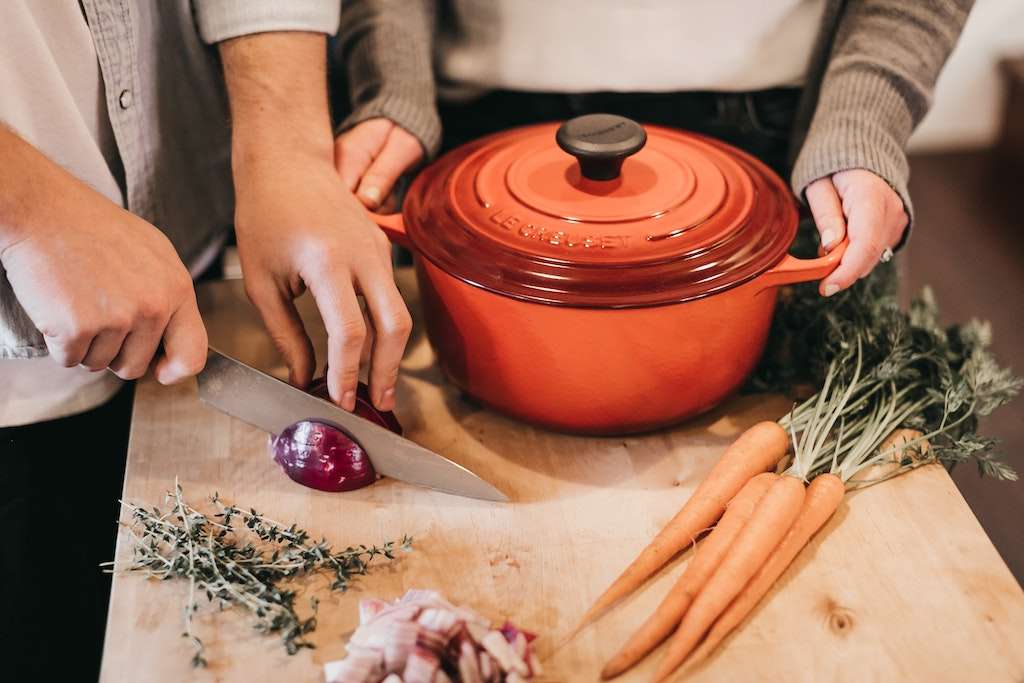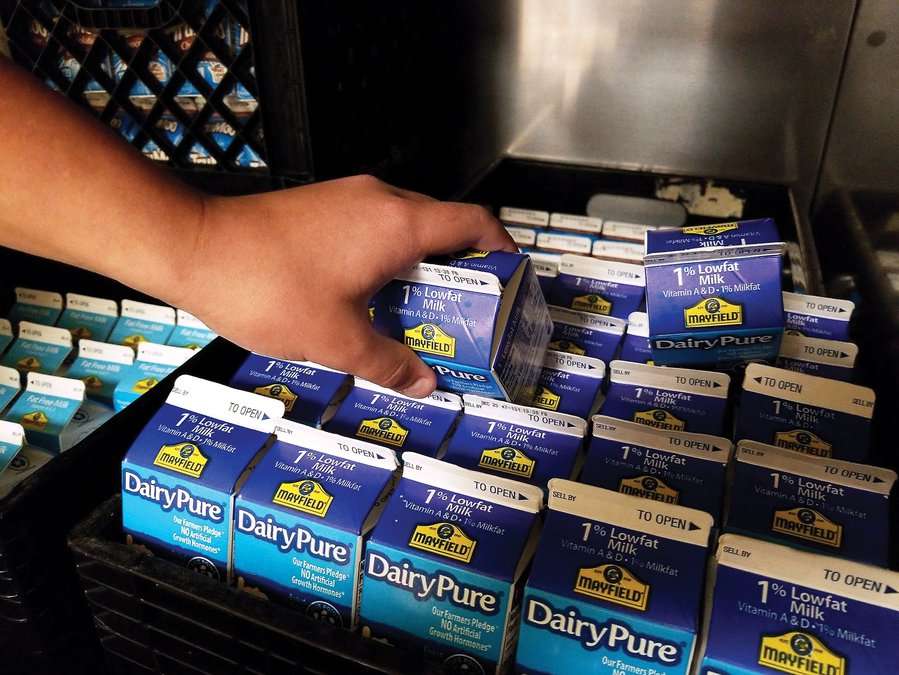From reducing food waste to shopping local markets, here’s how to reduce your environmental footprint in the kitchen.
There’s nothing quite like a home-cooked meal. Whether you’re whipping up a challenging recipe, such as a spinach and artichoke soufflé, or a simple dish of roasted veggies, getting creative in the kitchen allows you to have full control of what goes into your body. Cooking at home also gives you the opportunity to make more sustainable choices, from buying sustainable ingredients to reducing food waste.
Tackling the issue of food waste
The exorbitant amount of food that goes to landfills annually is evidence of the world’s malfunctioning food system. According to hunger relief non-profit Feeding America, nearly 40 percent of food is wasted in the U.S. alone each year. This equates to roughly 108 billion pounds of food — worth more than $408 billion.
But chefs are increasingly changing the way they think about — and prepare — food. In addition to leading the fight against food waste, they’re using their platforms to show how easy it is to cook sustainably at home.
Max La Manna is one chef who’s working to quell this issue with the dishes he creates. The self-taught chef and award-winning cookbook author has amassed more than one million followers on various social media platforms. His forte? Cooking easy-to-make meals that are as mouthwatering as they are zero-waste.
“Most people may say this is difficult, but what we are lacking is education. We have all the tools to inform each other on how to be zero waste or be vegan, but we give up too easily and don’t challenge ourselves to create change,” he told Vegan Food & Living. “When we create change in ourselves, the world conspires to open up doors that you never knew existed.”
Priyanka Naik is another self-taught vegan chef who’s making waves in the sustainable food space. Her debut cookbook, The Modern Tiffin, shares a number of tips and recipes that focus on sustainability, including not using harmful ingredients like palm oil and composting. In May, Naik launched Ecokitchen, an eight-week newsletter guide that teaches people how to be more climate-conscious in the kitchen.
“For the past few years, I have personally strived to live sustainably, make thoughtful choices, minimize food waste, and just overall be a better human to our planet,” she wrote on Instagram. “I hope these tips I’ve developed over the years inspire you to make some daily changes!”
Here’s how to cook more sustainably
Put your aprons on — it’s time to get cooking. Just take it from Naik and La Manna: cooking sustainably at home is easy. Here’s how.

1. Shop locally
You can easily reduce your carbon footprint by shopping at local markets. This helps to cut down on the miles it takes your food to go from the store to your home, also known as food miles. You can also meet the people growing your food, which gives you a better idea of their sustainable practices. And you can cut back on food waste by buying produce that would normally be thrown out due to its “ugly” appearance. Although they might not be as aesthetically pleasing as their counterparty, ugly produce is just as nutritious. Check for an “imperfect produce” bin at your local grocery store. (Pro tip: this can also save you money because “ugly” produce is generally sold at a discount.)

2. Opt for seasonal ingredients
A major benefit of buying seasonal foods, such as fruits and vegetables, is that they’re generally more nutritious, fresher, and much tastier than those that are sold out of season. This is because fresh produce tastes better after its natural harvest period. Out-of-season produce is also normally grown using a plethora of chemicals and pesticides, so opting for seasonal foods is a great way to lessen the impact your shopping habits have on the planet.

3. Make use of food scraps
According to the Natural Resources Defense Council, about two-thirds of all discarded food was still good enough to be eaten. Make use of the parts of your foods you would normally toss. For example, strawberry leaves are actually edible — and healthy. So instead of tossing them, simply eat them.
“I look for any way to get more out of [an] ingredient, and that doesn’t always mean eating it. Bananas, for example, have incredible nutrients in the skins, so I soak them in hot water and use them as a fertiliser on my houseplants,” La Manna explained in an interview with Square Mile. “It’s all just a bit of fun. Every time I cook, it’s an experiment.” Make use of what you already have in your fridge by making La Manna’s waste-free stew.

4. Eat more plants
The environmental impact of the animal agriculture industry is far-reaching. According to the Food and Agriculture Organization, this sector is responsible for 14.5 percent of all global greenhouse gas emissions. Cut back on your environmental footprint by consuming less meat and more plants.
Plus, eating more fruits and vegetables isn’t just healthy for the planet—it’s healthier for you too. Studies show a plant-based diet has a number of health benefits, including reducing the risk of heart disease by lowering cholesterol levels and lowering the risk of getting certain types of cancers like colon cancer.

5. Be wary of “sell-by” dates
The dates listed on products — sell-by, use-by, best-if-used before, and best-by dates — can be confusing at best. These labels indicate when a product will lose flavor or quality, not necessarily when the product will become unsafe to consume. According to the United States Department of Agriculture, products (excluding baby formula) are generally safe to be consumed after the expiration date as long as they’re absent of signs of spoilage.
Related on Ethos:


